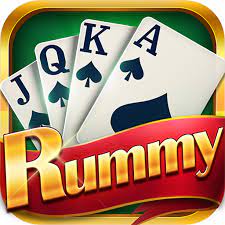How To Play Rummy In Cards, Rummy is a classic card game that has been enjoyed by people worldwide for generations. The game is known for its simple rules and strategic depth, making it appealing to both casual players and those looking for a challenge. This guide will walk you through the basic rules, objective, and strategies to master the game of Rummy.
Objective of the Game
The main objective of Rummy is to form valid combinations of cards, known as melds, which can be either sets or runs. Players aim to get rid of all their cards by forming these combinations and then going out before their opponents.
- Set: A set is a combination of three or four cards of the same rank but different suits (e.g., 7♦, 7♠, 7♣).
- Run (Sequence): A run consists of three or more consecutive cards of the same suit (e.g., 4♥, 5♥, 6♥).
The Deck
Rummy is typically played with two standard decks of 52 cards, including jokers. The jokers can be used as wild cards to substitute for any other card in the game.
- Number of players: 2-6 players can participate.
- Cards: In a standard game, each player is dealt 10 cards in a two-player game, and 7 cards if there are more than two players.
Basic Rules
- Dealing:
- The dealer shuffles the deck and distributes the required number of cards to each player.
- The rest of the cards are placed face down to form the stockpile.
- The top card is turned face-up to start the discard pile.
- Gameplay:
- Turns: Players take turns in a clockwise manner.
- Drawing: On each turn, a player must draw one card either from the stockpile (face-down) or the discard pile (face-up).
- Melding: After drawing, players can lay down any valid sets or runs from their hand.
- Discarding: At the end of their turn, players must discard one card to the discard pile, unless they have declared their win.
- Declaring: When a player has melded all their cards into valid combinations, they can “declare” or “go out.” The remaining players must reveal their hands, and any un-melded cards are counted as penalty points.
Valid Combinations
There are two types of valid combinations:
- Pure Sequence (Run): A run of three or more consecutive cards of the same suit without any joker. A pure sequence is mandatory for a valid declaration in most variants of Rummy.
- Impure Sequence: A run that includes one or more jokers. For example, 4♥, 5♥, Joker, 7♥ is an impure sequence, as the joker substitutes for 6♥.
Scoring
At the end of a round, points are calculated based on the cards left in the opponents’ hands that are not part of valid combinations:
- Face cards (K, Q, J): Each worth 10 points.
- Aces: 10 points unless they are part of a low run (A-2-3).
- Other cards: Face value (e.g., 7♠ = 7 points).
- Jokers: No points.
In many versions of Rummy, the player who wins the round scores zero, while the other players’ scores accumulate based on their unmatched cards.
Winning the Game
In Rummy, the game is usually played over several rounds. Players can set a point limit (e.g., 100 or 500 points) before starting, and the first player to reach or exceed that limit loses. The winner is the player with the fewest points at the end.
Key Strategies for Rummy
- Focus on Pure Sequences: Since a pure sequence is mandatory, it should be your priority.
- Use Jokers Wisely: Jokers are powerful, so use them to complete runs and sets that are harder to form. Avoid using jokers in pure sequences, as that won’t help meet the requirement for a valid declaration.
- Track Opponents’ Moves: Keep an eye on the cards your opponents pick from the discard pile. This can help you guess the combinations they are forming, allowing you to adjust your strategy.
- Discard High-Value Cards: If you are holding face cards that aren’t part of a meld, consider discarding them early. This reduces the risk of being penalized heavily if your opponent declares first.
- Bluffing and Delaying: Sometimes, you may want to hold off from declaring to reduce the penalty for your opponents. This is particularly useful if your opponents are holding many high-value cards that they are struggling to meld.
Variations of Rummy
There are many popular variations of Rummy, each with slight rule differences:
- Gin Rummy: Played with only two players, and the objective is to form sets and runs as quickly as possible. A player can “knock” once they have 10 points or fewer in unmatched cards.
- Indian Rummy: This version is played with two decks and more cards (13 per player), and it requires two sequences, one of which must be a pure sequence.
- Rummy 500: In this version, players score points for the cards they meld and can also lay off cards on their opponents’ melds.
- Kalooki (or Kaluki): This version is played with wild cards and allows multiple rounds with cumulative scoring.
Conclusion
Rummy is a versatile and enjoyable card game that combines luck, skill, and strategy. Whether you are playing casually with friends or competitively in tournaments, mastering the rules and honing your strategy will make you a formidable player. Gather your cards, shuffle the deck, and enjoy the timeless fun of Rummy!




